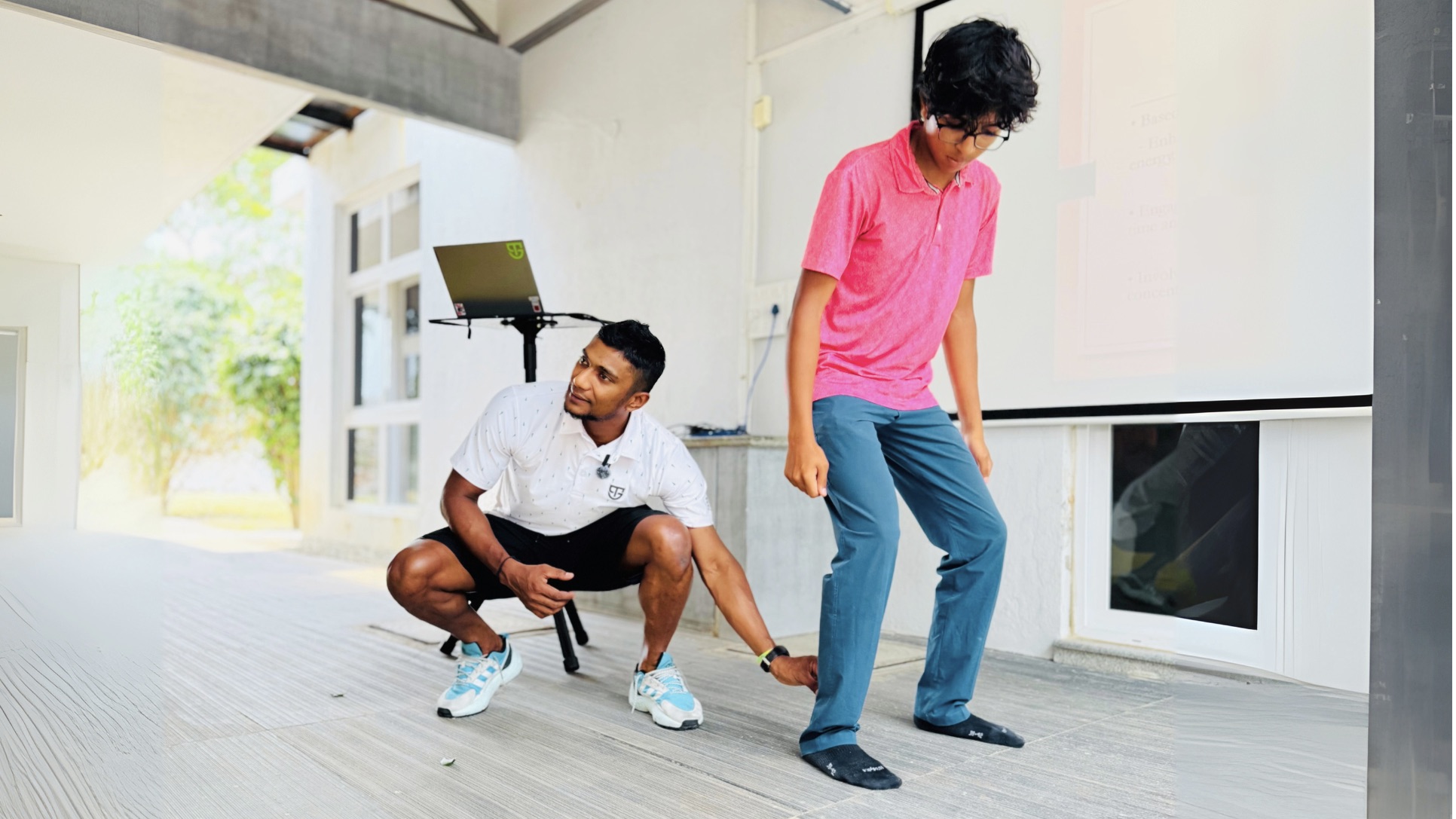Doesn’t it look effortless sometimes when you watch an athlete run across a track, or lift off the ground for a substantial jump, or even soar high for a rebound. However, those seamless ground activities are the result of one essential element of training – “plyometrics”. This is what lies behind that surge of strength and speed.
S&C Coach Bharani recently at a players meet, walked everyone through the science and application of plyometric training, distilling it from intricate biomechanics to approachable, straightforward examples. Not only did he explain what plyometric training is, but he also explained why it is essential for athletes who wish to increase their strength, speed, and efficiency.
Giving participants a template for transforming raw strength into explosive performance was the primary goal of this session, rather than focusing on abstract theory. So, let’s have a glimpse of what the session was all about!
Plyometric training: what is it?
The primary focus of plyometric training is high-velocity, explosive movements and box jumps, sprints, clap push-ups, and bounding drills are some common exercises that come to mind. These workouts train the body to generate the most force in the shortest amount of time.
Plyometric is when you move explosively to enhance power and speed, Bharani said, thereby summarizing it in a single sentence.
Plyometric training places more emphasis on speed and power than traditional strength training, which involves performing heavy lifts. Because the body is still fresh and able to produce at its best, they are usually used at the beginning of training sessions.
The Stretch-Shortening Cycle (SSC): The Science Behind it
The stretch-shortening cycle (SSC), a normal muscle and tendon action, is the foundation of plyometric exercise. This is how it operates:
- Your muscles extend during the stretch (eccentric phase), accumulating potential energy, as in dropping into a squat.
- The short interval between stretching and contracting is known as the transition (amortization phase).
- Muscles contract during the shortening (concentric phase), causing an explosive release of stored energy, for instance, when leaping upward.
According to Bharani, it functions similarly to a spring: when you pull it back, energy is stored; when you swiftly release it, forceful forward motion is produced. The athlete’s explosiveness increases with the speed of this cycle.
The natural springs of your body: Elasticity and Tendons
Tendons are crucial to the function of muscles. Tendons are elastic tissues that store and release energy, similar to springs. The series elastic component (SEC) is the term for this.
In a squat leap, for instance, lowering yourself into the squat stretches your muscles and tendons, and, stores elastic energy. That energy is released when you jump up, which raises your body. Their stiffness influences your tendons’ ability to store and release force. If it’s too soft, energy will be lost. If you’re too rigid, you run the danger of getting hurt. Plyometric exercises create resilience and explosiveness by balancing the development of tendon stiffness.
Bharani relates this to automobiles: To manage large loads, a truck has a rigid suspension. A car’s suspension is softer and isn’t as resilient. Athletes may also transfer and withstand more stress when their tendons are stiffer.
The Neuromuscular Adaptations: Developing the Connection Between the Brain and Body
In addition to being physical, plyometric exercise rewires the neurological system. When muscles stretch, muscle spindles sense it. They quickly tell the brain, “We’re stretched!” The brain responds right away: “Contract now!” Explosive movement is the result of this reflex action.
Enhancing rate coding, or the speed and effectiveness of messages moving from the brain to the muscles, is how Bharani described this. He gave an example of a water tap, which first emits droplets. The tap gradually opens completely, letting water (signals) flow out rapidly.
Additionally, plyometrics also enhances motor unit recruitment. Athletes train their bodies to call upon fast-twitch muscle fibers—the ones responsible for speed and power—more readily, even under fatigue.
The importance of rapid transitions
The significance of ground contact time was one of Bharani’s main points of discussion with the golfers. He explains how more energy is lost as heat the longer one remains on the ground during a jump or sprint. Energy return is maximized via swift landing and takeoff transitions.
Where Plyometrics appear in Athletics
Plyometric qualities appear everywhere in athletics. No matter which sports you enter, with Plyometrics training, you’ll always be on the positive side. Let’s see some of the areas where it benefits the sportspersons.
- Sprinting: Every stride depends on rapid ground contact and explosive push-off.
- Jumping: Basketball, volleyball, and track athletes thrive on vertical power.
- Weightlifting: Moving heavy loads explosively requires plyometric efficiency.
- Field Sports: Quick changes of direction, sudden accelerations, and reactive agility all benefit from plyometric training.
Bharani also emphasised over the fact that it’s not just an exercise; it’s how a player moves in the competition.
Plyometric Training Advantages
The players understood the need for plyometrics by the end of the session. Among the notable advantages are:
- Enhanced explosive power: Converting strength into proper velocity.
- Increased force development rate, thereby producing force more quickly.
- Improved brain-to-muscle communication: Faster and improved neuromuscular coordination gets better once a player starts enhancing form through the plyometric training. In sports, faster reaction times are very important as every millisecond counts. This is what gets better with this super exercise.
- Increased agility and sprint efficiency: Speed is directly correlated with shorter ground contact time thereby enhancing your game.
Plyometric Training Types
Coach Bharani divided Plyometrics into three primary categories:
I- Plyometrics for the Lower Body
Which includes bounding drills, depth jumps, box jumps, and squat jumps.
II- Upper Body Exercises
Including explosive passes, clap push-ups, and medicine ball throws.
III- Fundamental Plyometrics
Dynamic planks, explosive sit-ups, and rotational throws.
Each one ensures that athletes build all-around explosiveness by training a distinct facet of power.
The meeting concluded on a note that plyometric training is the link between strength and performance, not an optional extra. One can move loads if you have strength. With plyometric training, one learns how to use that strength swiftly, efficiently, and explosively through the super exercise routines. This will also help the players discover the hidden potential in their muscles and tendons, whether the goal is to run faster, take an impromptu shot, jump higher, or even respond faster. They move with explosiveness as well as strength, which is frequently the difference between competing and winning. So, next time you think about your workout regimes, do ask your coaches for the plyometric guidance and benefit the most out of it!



